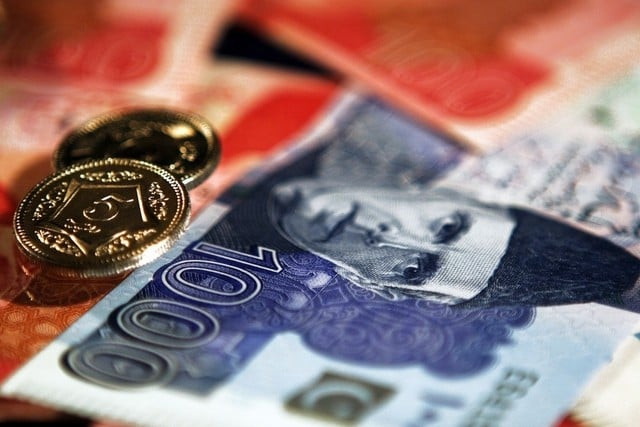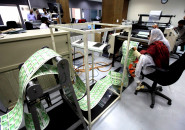Current account deficit shrinks 6.8%
Fall in deficit is small as analysts expected a surplus due to record low oil prices

PHOTO: BLOOMBERG
The current account deficit shrank 6.8%, or $184 million, year-on-year in 2015-16. It had amounted to over $2.7 billion in the preceding fiscal year, SBP data shows.
A deficit or surplus reflects whether a country is a net borrower or lender of capital with respect to the rest of the world.
Current account deficit swells up to $2.5b
The year-on-year fall in the current account deficit is small, as some analysts initially expected Pakistan to post a surplus in the wake of record low oil prices for most part of 2015-16.
As a percentage of gross domestic product (GDP), the current account deficit stood at 0.9% in 2015-16 as opposed to 1% in the preceding fiscal year.
 DESIGN: AMAL ALAM
DESIGN: AMAL ALAMSBP data shows rising non-oil imports have offset gains from the lower oil import bill. Pakistan’s total imports of goods in July-June were valued at $40.4 billion as opposed to $41.3 billion a year ago, which shows an annual decrease of 2%.
However, the corresponding decline in exported goods was 8.6%, as Pakistan sold goods worth $22 billion in July-June. In simple words, not only Pakistan’s exports dropped in 2015-16, SBP data shows the rate of decline remained higher than the corresponding decrease in imports.
According to the SBP’s latest quarterly report, upward pressure on non-oil imports, especially machinery, was the result of a surge in investments in power generation and distribution infrastructure. Non-oil imports rose 7.4% in the first three quarters of 2015-16 over the same period of preceding fiscal year.
8MFY2015-16: Current account deficit shrinks to $1.86b
In contrast, the import of petroleum products dropped 37.2% in the first three quarters of 2015-16, the SBP said, with the entire decline driven by lower unit prices. Quantity-wise, imports of petroleum products increased 8.6% over the nine-month period.
“Nonetheless, the importance of 37.2% reduction in oil imports in July-March cannot be overstated, as it helped contain the growth in trade deficit,” the SBP said.
It blamed Pakistan’s “depressing” export performance on lower commodity prices, subdued demand from China, a weak global recovery and high domestic production costs.
According to the Economist Intelligence Unit (EIU), an international forecasting and advisory service, Pakistan’s merchandise trade deficit is expected to widen over the coming years as a result of greater demand for imported investment and consumer goods.
The import bill will increase further, as oil prices recover post-2016, the EIU said in a report in March. It added that exporters in Pakistan will struggle going forward owing to persistent power shortages and poor basic infrastructure.
Published in The Express Tribune, July 22nd, 2016.
Like Business on Facebook, follow @TribuneBiz on Twitter to stay informed and join in the conversation.



















COMMENTS
Comments are moderated and generally will be posted if they are on-topic and not abusive.
For more information, please see our Comments FAQ